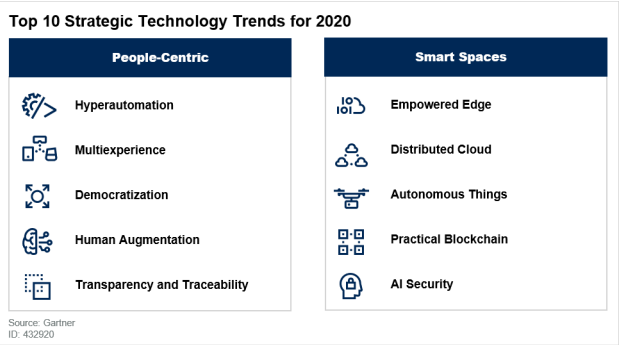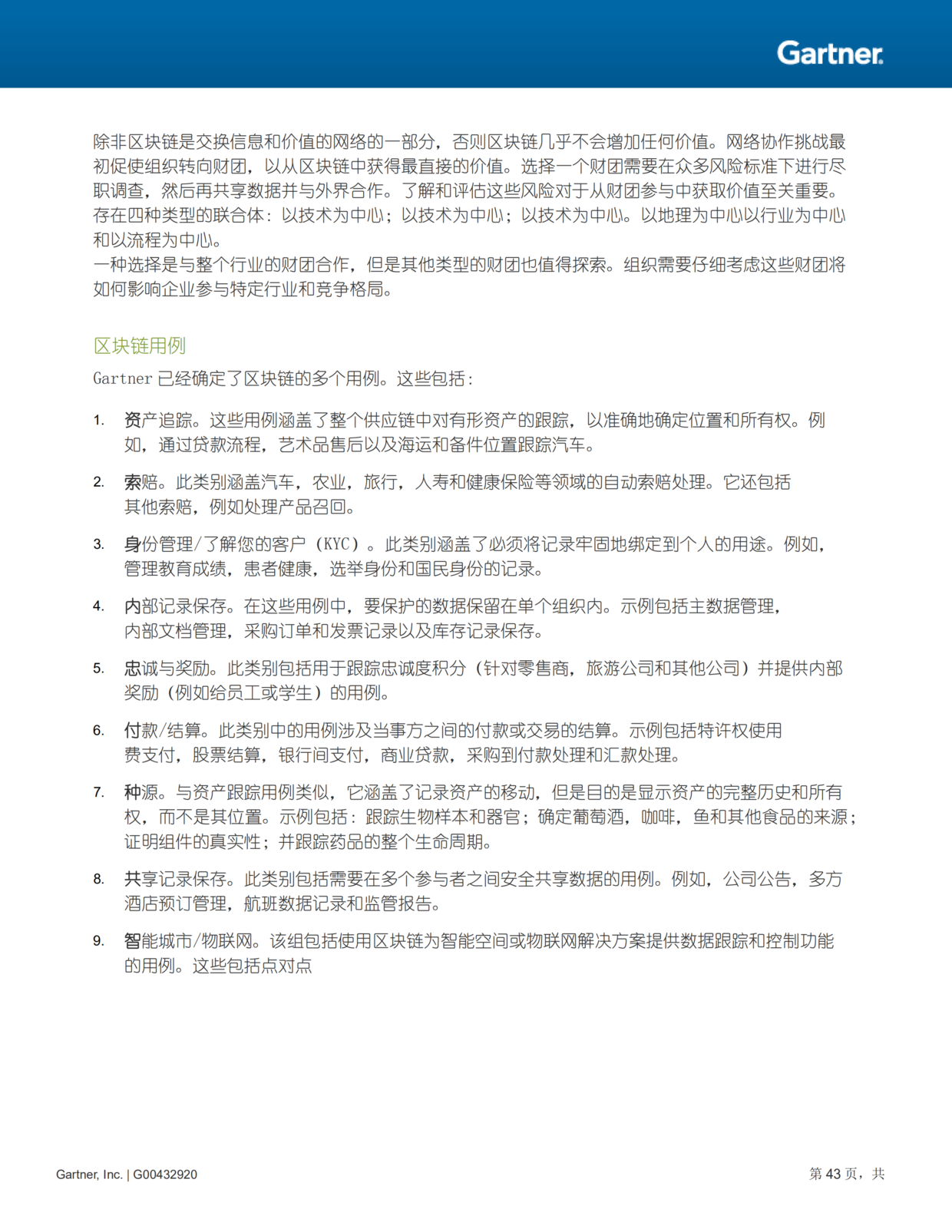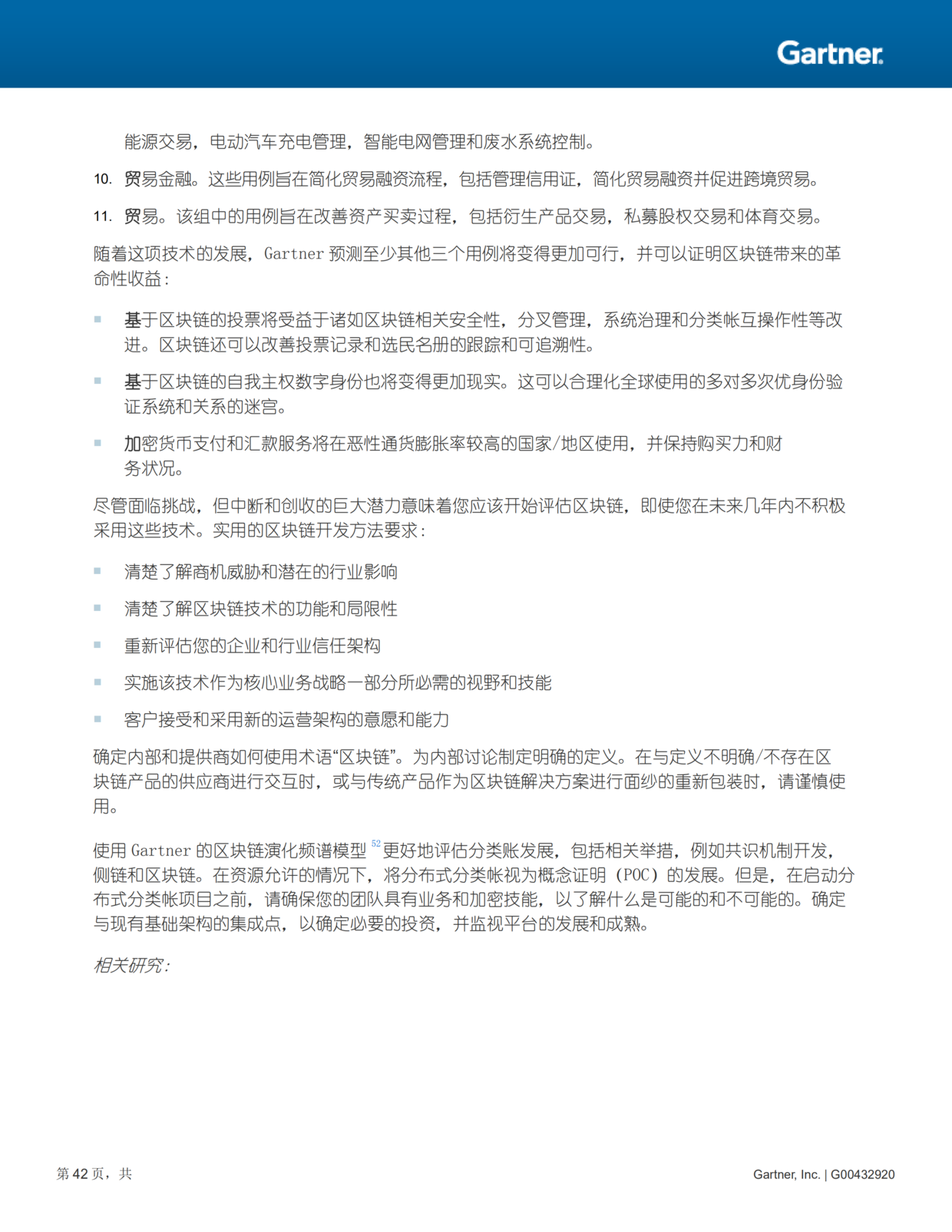Gartner's Top Ten Strategic Technology Trends in 2020: Blockchain will be fully scalable by 2023
Source: Interchain Pulse
Recently, Gartner released the top ten strategic technology trends in 2020, including blockchain technology. It is also pointed out that the blockchain has been applied to experiments and small-scale projects, and will be fully scalable by 2023.

Gartner stated in his strategic planning vision that by 2023, the blockchain will be technically extended and will support trusted private transactions with the necessary data confidentiality.
- The turnover of Bakkt hit a new high on the day of the 1023 plunge, and the netizens wondered why the organization always went short.
- Litecoin, the whole line of mining machines approaching the shutdown price… Bitcoin machine S9 is also "hard"
- A Venezuelan self-report: In Caracas, I used Bitcoin to pay for the medical expenses of my son’s birth.
It is also introduced that the blockchain is a distributed ledger, which is a chronological list of transaction records that are shared by all participants in the network, encrypted and signed, and irrevocable.
The blockchain also allows the parties to trace assets back to their original source, which is beneficial to traditional assets and paves the way for other uses, such as traceability of foodborne diseases to the original supplier. It also allows two or more parties not aware of each other to securely interact and exchange value in a digital environment without the need for centralized permissions.
The complete blockchain model consists of five elements: shared and distributed ledgers, immutable and traceable ledgers, encryption, tokenization, and distributed public consensus mechanisms. However, due to a range of technical issues, including poor scalability and interoperability, blockchain is still immature for enterprise deployment.
Today's enterprise blockchain takes a practical approach to creating a complete block of authoritarian records of major events simply by making the ledger independent of individual applications and participants and replicating the ledgers in a distributed network, thus implementing only the complete block Some elements of the chain. Everyone with access can see the same information, and only one shared blockchain can simplify integration. Consensus is handled through a more traditional private model.
The following is the part of the report that covers the contents of the blockchain: (pay attention to the inter-chain pulse, the background reply: 2020, you can get the full report)




We will continue to update Blocking; if you have any questions or suggestions, please contact us!
Was this article helpful?
93 out of 132 found this helpful
Related articles
- DeFi Series Report | Measuring DeFi Trends with DAI Eco Data
- Former CFTC Chairman: The launch of futures has pierced the bitcoin bubble, and bitcoin prices are more easily manipulated
- Babbitt column | The contours of the next round of payment changes: the road to break through digital currency payments
- Depth | Block rewards are about to be halved, is BTC still safe? (on)
- Bakkt announced that it will launch a Bitcoin option contract on December 9.
- Comments | Desperate currency circle, princes will be related to each other?
- Former Nasdaq Vice President David Weild: Digital Securities is the historic intersection of blockchain and finance





